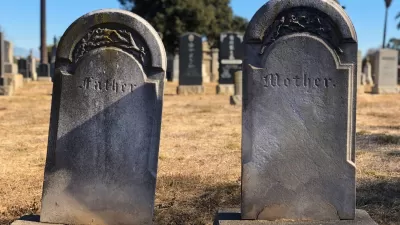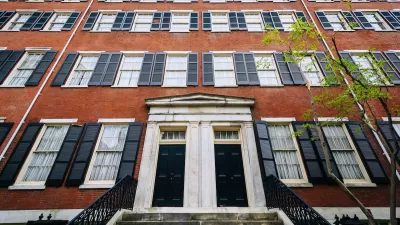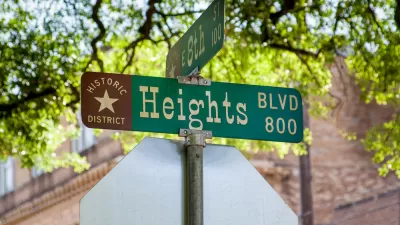New research seeks to provide a better understanding of the relationship between historic preservation and neighborhood change in the LGBTQ community.

In an article in Planning Magazine, Kelly Kinahan and Matthew H. Ruther discuss their research into "the relationship between locally designated and National Register historic districts, and demographic, socioeconomic, and housing changes in 46 U.S. cities," with a particular focus on "unmarried partnered same-sex households (UPSSHs), racial and ethnic subgroups, and median household income."
Their findings showed that in historic districts created in the 1990s, "when historic districts are in place, significant growth in UPSSHs follows," indicating that "planners concerned with protecting queer spaces should consider incorporating preservation-based approaches, including establishing local and National Register historic districts to preserve these spaces." The results also showed that "the presence of male UPSSHs increases the likelihood of locally designated historic districts," which "could suggest that male UPSSHs are key actors in the creation of locally designated historic districts, which aligns with the theory that gay men use historic preservation tools to demarcate space and power. Locally designated historic districts offer a more direct means of land control through the regulations outlined within the ordinances that govern changes to the district's built environment, which differ from NRHDs' mostly honorific status." Lastly, while historic designation seems to cause long-term displacement of racial and ethnic subgroups, the same does not hold true for UPSSHs.
The authors acknowledge the limitations of studying UPSSHs exclusively, reminding planners to "work with neighborhood residents to ensure all LGBTQ social histories and those of other historically marginalized groups are included in the significance statements for new historic district designations where appropriate."
"A more robust understanding of how preservation tools relate to neighborhood change — particularly among sexual, racial, and ethnic minority communities — can help planners as they grapple with the potentially negative effects of gentrification and displacement that could result from historic district designation." The authors hope that their research "will help practicing planners understand trends associated with historic preservation efforts and pinpoint interventions needed in historic districts to mitigate potentially negative outcomes for these demographic groups."
FULL STORY: Historic Preservation and the LGBTQ Community

Study: Maui’s Plan to Convert Vacation Rentals to Long-Term Housing Could Cause Nearly $1 Billion Economic Loss
The plan would reduce visitor accommodation by 25,% resulting in 1,900 jobs lost.

North Texas Transit Leaders Tout Benefits of TOD for Growing Region
At a summit focused on transit-oriented development, policymakers discussed how North Texas’ expanded light rail system can serve as a tool for economic growth.

Using Old Oil and Gas Wells for Green Energy Storage
Penn State researchers have found that repurposing abandoned oil and gas wells for geothermal-assisted compressed-air energy storage can boost efficiency, reduce environmental risks, and support clean energy and job transitions.

Santa Barbara Could Build Housing on County Land
County supervisors moved forward a proposal to build workforce housing on two county-owned parcels.

San Mateo Formally Opposes Freeway Project
The city council will send a letter to Caltrans urging the agency to reconsider a plan to expand the 101 through the city of San Mateo.

A Bronx Community Fights to Have its Voice Heard
After organizing and giving input for decades, the community around the Kingsbridge Armory might actually see it redeveloped — and they want to continue to have a say in how it goes.
Urban Design for Planners 1: Software Tools
This six-course series explores essential urban design concepts using open source software and equips planners with the tools they need to participate fully in the urban design process.
Planning for Universal Design
Learn the tools for implementing Universal Design in planning regulations.
Ascent Environmental
Borough of Carlisle
Institute for Housing and Urban Development Studies (IHS)
City of Grandview
Harvard GSD Executive Education
Toledo-Lucas County Plan Commissions
Salt Lake City
NYU Wagner Graduate School of Public Service





























